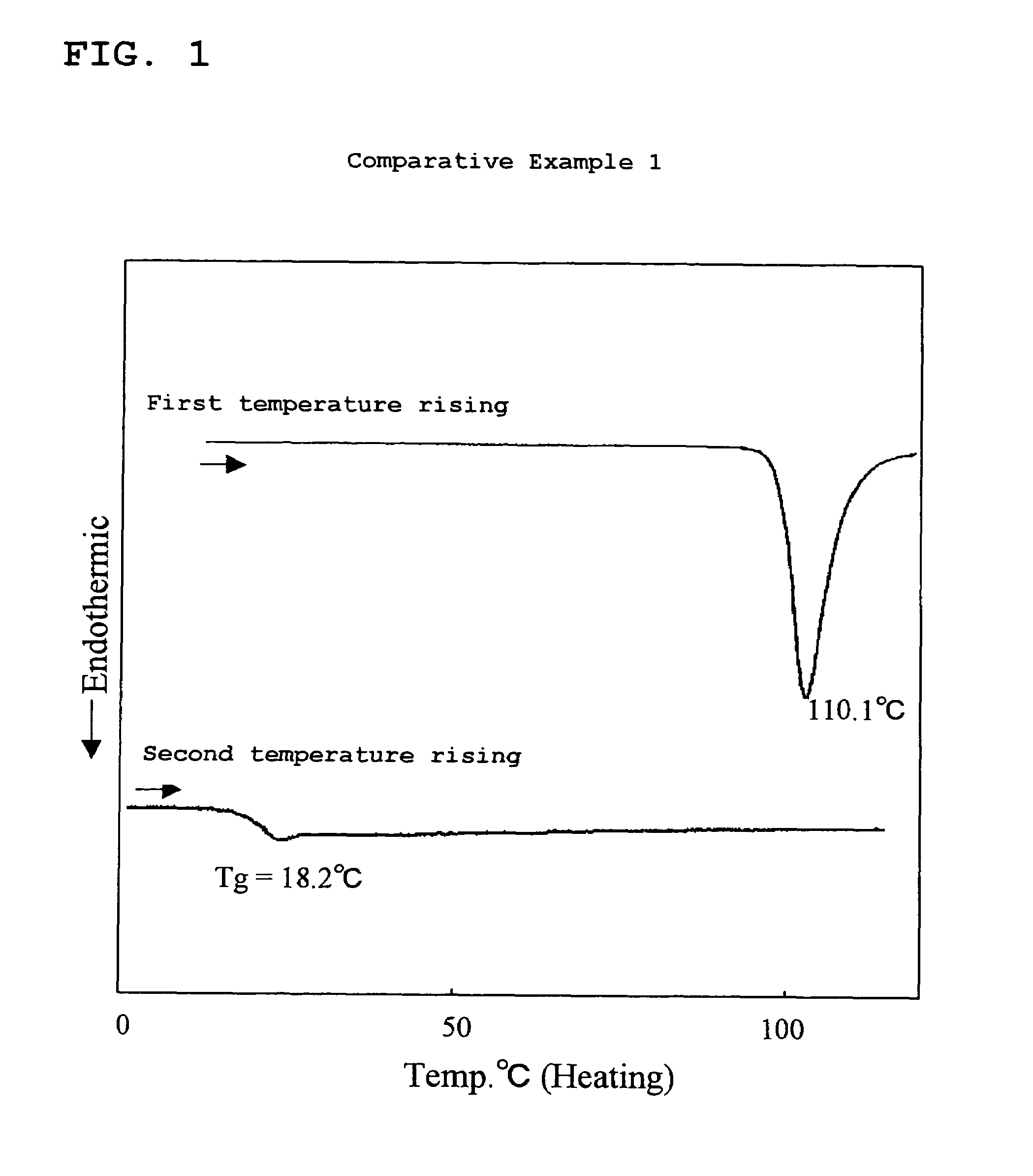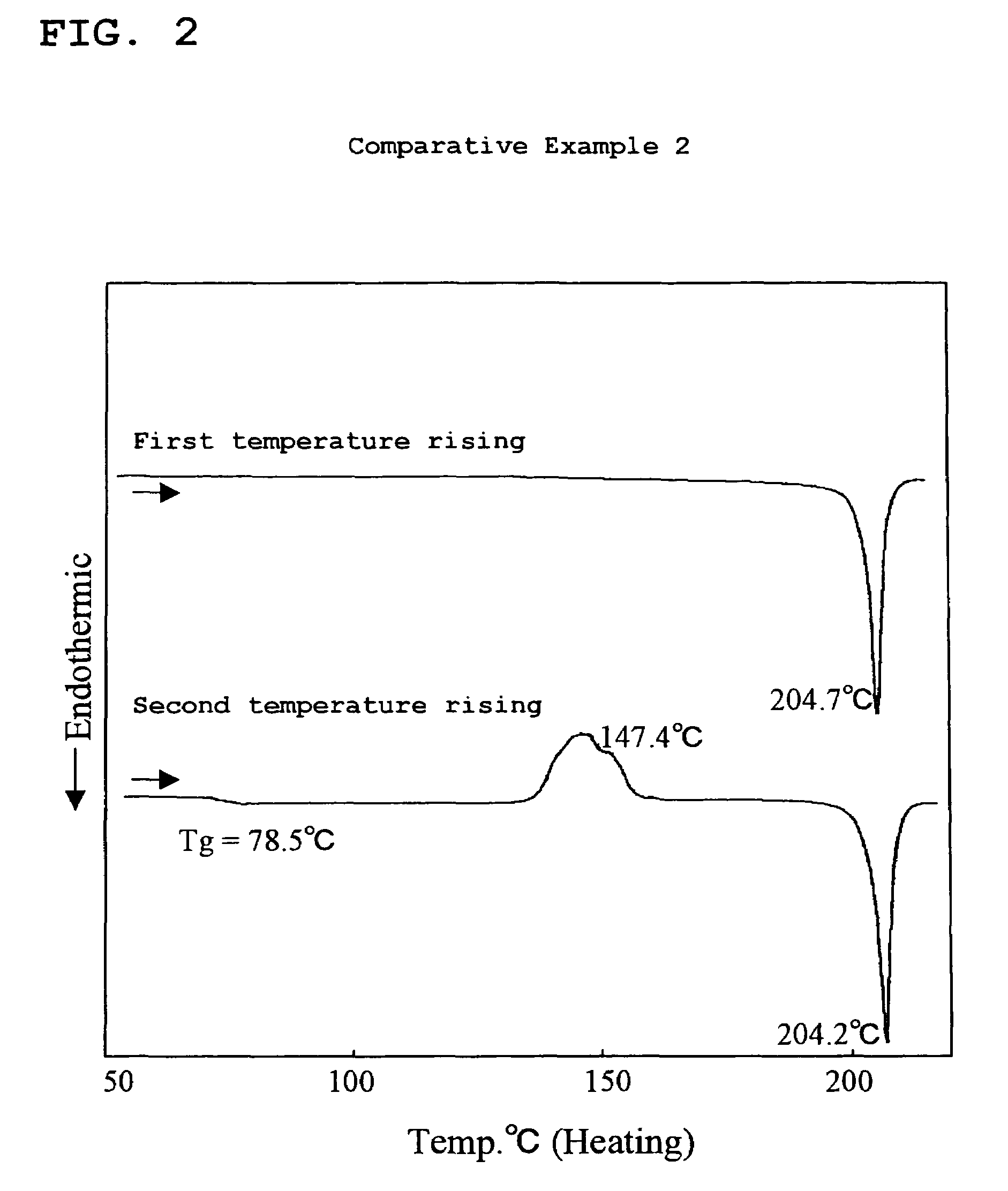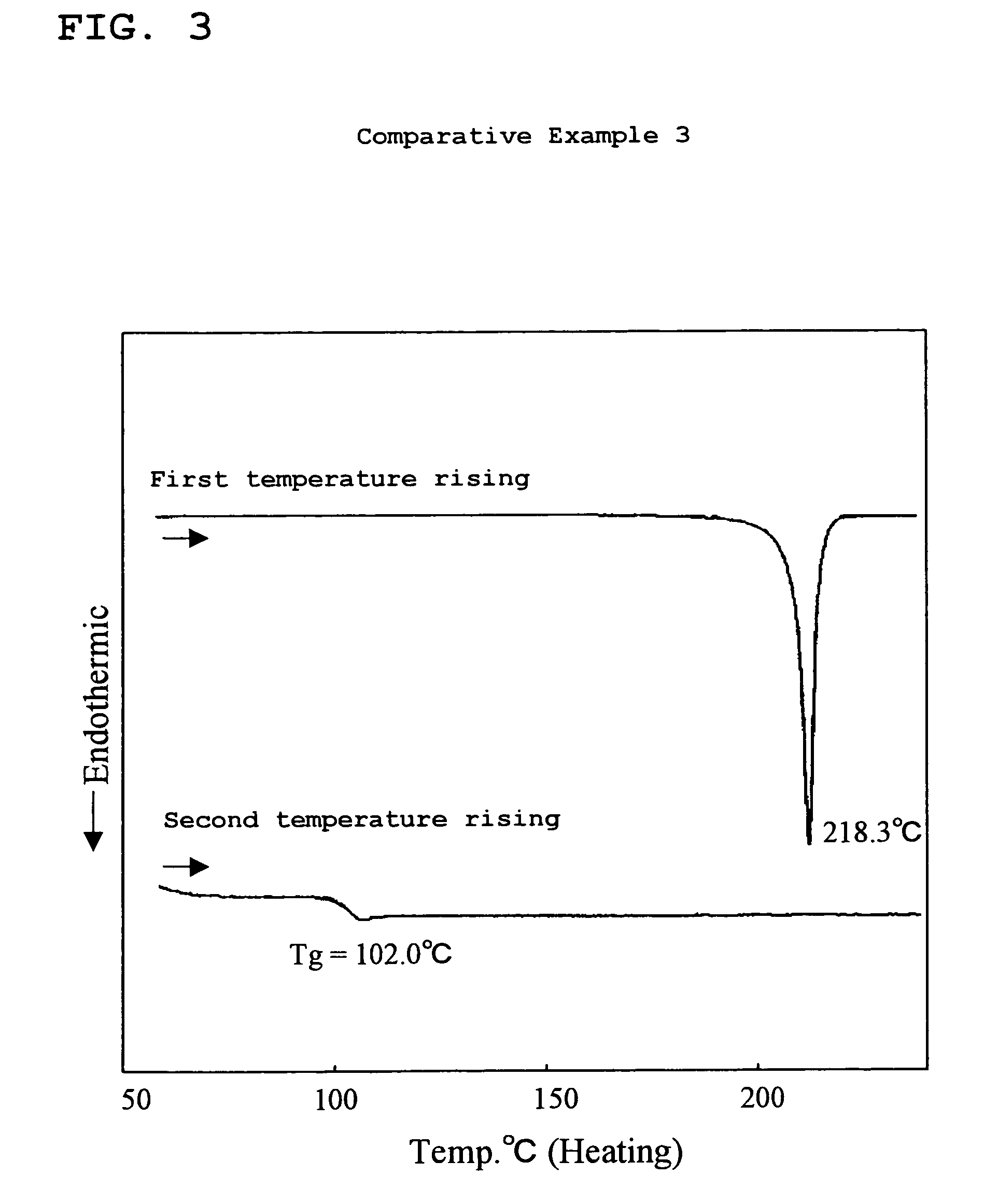Amine compound having fluorene group as framework, process for producing the amine compound, and use of the amine compound
a technology of amine compound and fluorene group, which is applied in the field of amine compound having fluorene group as framework, process for producing amine compound, and use of amine compound, can solve the problems of poor stability, large possibility of shortening, dark spot or the like, and poor durability, and achieve excellent hole transport capability, excellent thin film stability, and high durability
- Summary
- Abstract
- Description
- Claims
- Application Information
AI Technical Summary
Benefits of technology
Problems solved by technology
Method used
Image
Examples
synthesis example 1
[0102]0.82 g (34.2 mmol) of sodium hydride and 25 ml of THF were placed in a 100 ml eggplant type flask under nitrogen stream, and the resulting reaction solution was cooled to 0° C. THF solution of 6.5 g (14.3 mmol) of 2,7-dibromo-4,4′-(9-fluorenylidene)diphenol was added dropwise to the flask, and 5.3 g (42.7 mmol) of 2-methoxyethoxymethyl chloride was subsequently added dropwise thereto. The resulting mixture was stirred at room temperature for 12 hours, and 10 ml of methanol was added to decompose sodium hydride. Thereafter, 20 ml of toluene was added to separate an organic phase. Washing with water and a saturated sodium chloride solution was conducted, and then the organic phase was concentrated. By recrystallizing the concentrated liquid from ethanol, 2,7-dibromo-9,9′-bis[4-(2-methoxyethoxymethoxy)phenyl]-9H-fluorene (intermediate A) was isolated in an amount of 7.7 g (yield=80%). Identification was conducted with 1H-NMR and 13C-NMR.
[0103]
[0104]Melting point: 94-96° C. 1H-NMR...
synthesis example 2
[0111]2.0 g (2.9 mmol) of 2,7-dibromo-9,9′-bis[4-(2-methoxyethoxymethoxy)phenyl]-9H-fluorene obtained in Synthesis Example 1, 1.70 g (5.9 mmol) of triphenylamineboronic acid, 9.4 g of 20% sodium carbonate, 10mg of tetrakis(triphenylphosphine)palladium and 15 ml of THF were placed in a 100 ml eggplant type flask equipped with a reflux condenser, and refluxed under heating for 5 hours. After stirring for a given period of time, the reaction solution was cooled to separate an organic layer. The organic layer was dried with anhydrous magnesium sulfate and then concentrated to isolate 2,7-bis(4-diphenylaminophenyl)-9,9′-bis[4-(2-methoxyethoxymethoxy)-phenyl]-9H-fluorene (intermediate D) in an amount of 2.37 g as a pale yellow powder. Identification was conducted with 1H-NMR and 13C-NMR.
[0112]
[0113]1H-NMR (CDCl3): δ=7.77 (d, 2H), 7.54-7.58 (m, 4H), 7.44 (d, 4H, J=8.8 Hz), 6.97-7.29 (m, 28H), 6.90 (d, 4H, J=8.8 Hz), 5.20 (s, 4H), 3.76-3.80 (m, 4H), 3.49-3.54 (m, 4H), 3.33 (s, 6H) 13C-NMR (...
synthesis example 3
[0117]2,7-bis(diphenylamino)-9,9′-bis[4-(trifluoromethane-sulfonyloxy)phenyl]-9H-fluorene (intermediate C) was isolated according to Synthesis Example 1, except for changing 2-methoxyethoxymethyl chloride to chloromethyl methyl ether. Identification of the intermediates obtained in each reaction was conducted with 1H-NMR and 13C-NMR.
(1) 2,7-dibromo-9,9′-bis(4-methoxymethyloxyphenyl)-9H-fluorene
[0118]1H-NMR (CDCl3): δ=7.44-7.59 (m, 6H), 7.06 (d, 4H, H=8.8 Hz), 6.91 (d, 4H, J=8.8 Hz), 5.14 (s, 4H), 3.46 (s, 6H) 13C-NMR (CDCl3): δ=156.2, 153.4, 137.8, 137.6, 130.8, 129.3, 129.0, 121.8, 121.5, 116.1, 94.3, 64.5, 56.1
(2) 2,7-bis(diphenylamino)-9,9′-bis(4-methoxymethyloxy-phenyl)-9H-fluorene
[0119]1H-NMR (THF-d8): δ=7.57 (d, 2H, J=8.2 Hz), 6.78-7.22 (m, 32H), 5.09 (s, 4H), 3.38 (s, 6H) 13C-NMR (THF-d8): δ=156.9, 153.6, 148.5, 147.5, 139.5, 135.4, 129.7, 124.6, 123.8, 123.3, 122.4, 120.8, 116.2, 95.0, 64.9, 55.8
(3) 2,7-bis(diphenylamino)-9,9′-bis(4-hydroxyphenyl)-9H-fluorene
[0120]1H-NMR (TH...
PUM
| Property | Measurement | Unit |
|---|---|---|
| reaction temperature | aaaaa | aaaaa |
| reaction temperature | aaaaa | aaaaa |
| temperature | aaaaa | aaaaa |
Abstract
Description
Claims
Application Information
 Login to View More
Login to View More - R&D
- Intellectual Property
- Life Sciences
- Materials
- Tech Scout
- Unparalleled Data Quality
- Higher Quality Content
- 60% Fewer Hallucinations
Browse by: Latest US Patents, China's latest patents, Technical Efficacy Thesaurus, Application Domain, Technology Topic, Popular Technical Reports.
© 2025 PatSnap. All rights reserved.Legal|Privacy policy|Modern Slavery Act Transparency Statement|Sitemap|About US| Contact US: help@patsnap.com



